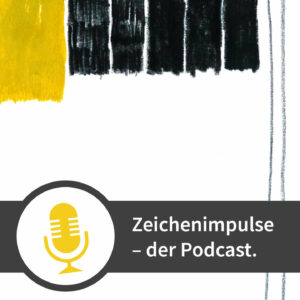Realise
The Resilience of Art in Liquid Crises

Das im November 2014 neu gestartete Projekt REALISE_The Resilience of Art in Liquid Crises widmet sich den zahlreichen und vielschichtigen Krisen der Gegenwart. Mit den Mitteln der zeitgenössischen Kunst werden verschiedene individuelle, gesellschaftliche, ökonomische und ökologische Krisen unter die Lupe genommen, visualisiert und zur Diskussion gestellt.
Während die Aktivitäten des ersten Projektjahres verstärkt der Auseinandersetzung mit dem Charakter der Krise bzw. den konkreten und fatalen Krisenerscheinungen gelten, geht es im zweiten Jahr vor allem um innovative Ideen, resiliente Gesellschaften und Handlungsansätze für den Umgang mit krisenhaften Situationen. Krisen erscheinen dann nicht mehr nur als unabwendbares Übel, sondern können als Auftakt und Chance für die Diskussion über gesellschaftliche Werte und Utopien genauso wie über Möglichkeiten des Widerstands begriffen werden.
Die Projektaktivitäten werden im Verlauf der kommenden zwei Jahre (November 2014 bis Oktober 2016) auf der 56. Biennale Venedig 2015, zahlreichen Ausstellungen, Workshops und einem Festival in den beteiligten Partnerländern stattfinden. Die Aktivitäten und Diskussionen werden darüber hinaus auf der Online-Plattform REALISE Virtual Tours einem breiten Publikum zugänglich gemacht.
Bei den beteiligten Institutionen handelt es sich um Kultureinrichtungen aus sechs verschiedenen Staaten der Europäischen Union: Heinrich-Böll-Stiftung Brandenburg e.V. (DE), Dom umenia/Kunsthalle Bratislava (SK), ArtBOX.gr (EL), Croation Association of Artists/HDLU (HR), next – Verein für zeitgenössische Kunst (AU), ZEMOS98 (ES).
„The Resilience of Art in Liquid Crises – REALISE“ wird im Rahmen des Creative Europe Programms der Europäischen Kommission gefördert.
The newly launched project “REALISE_The Resilience of Art in Liquid Crises” addresses the great number of recent phenomenons of crises. By means of contemporary art different individual, social, economic as well as ecological crises will be analysed and discussed. While the activities of the first year are strongly dedicated to the character of crisis and its consequences, the project is going to focus on innovative ideas, resilient societies and how to approach critical situations in its second year. REALISE aims at identifying the potential and the self-efficacy of people in the face of crises as well as the proactive development of resilience by means of creativity and artistic production. The participating institutions from Germany, Slovakia, Greece, Croatia, Austria and Spain cooperate within the projects life span (nov. 2014 – oct. 2016) in various activities such as transnational exhibitions and performances, festivals, artists in residence-programs, workshops and lectures, as well as a common presentation of the REALISE project at the 56. Biennale d’Arte in Venice. An interactive virtual exhibition platform will open the results of the project to a wider European public. The participating institutions are the following: Heinrich-Böll-Stiftung Brandenburg e.V. (DE), Kunsthalle Bratislava (SK), ArtBOX.gr (GR), Croation Association of Artists/HDLU (HR), next – Verein für zeitgenössische Kunst (AU), ZEMOS98 (ES).
REALISE is co-funded by the Creative Europe Programme of the European Union.
REALISE GOES TO VENICE – Collegio Armeno
6th – 10th of May 2015
next – Verein fuer zeitgenoessische Kunst conceptualises and implements international Artists in Residence Programs since 1995. Within the framework of interdisciplinary cooperation, various artists are invited to work together on specific topics in temporary studios. Critical approaches to contemporary socio-political realities and processes as well as relevant questions on history and cultural heritage are brought up to be discussed philosophically and artistically.
Works by Silvia Maria Grossmann, Aurelia Meinhart and Julian Palacz will be the contribution of next-Verein für zeitgenössische Kunst at Venice Biennale in 2015.
Artists works

GOOD MORNING!
slide show, 3 minutes, 2015
by Silvia Maria Grossmann
In her slide show “GOOD MORNING!” Silvia Maria Grossmann deals with one of the most serious crises being caused by human beings today: pollution of the oceans.
In a most protected landscape of pristine islands, the artist found large amounts of garbage washed ashore on the palm and mangrove beaches. So it happens that a red hermit crab, in his recycled snail shell, meets face to face the words ‘Good Morning‘ on a can of aerosol spray deodorant.

GREEK COFFEE – Ελληνικό καφέ
video HD, 3 minutes, 2015
by Aurelia Meinhart
In the video work “GREEK COFFEE” of Aurelia Meinhart, two elderly gentlemen, playing backgammon in a typical Greek coffeehouse, obviously for ages… Nothing is different, everything just as it was. The rules are always the same – people play games in the Kaffetaki for hours every day, drink kafé ellenikó or Ouzo and philosophize on God and the world. In this world the crisis doesn`t exist: Like a wave it spills onto the rock that is the Greek coffeehouse, offering protection from all weathers. Are the simplicity of traditional rituals enough for an unreachable fortress against global crises?

MAO YUANS
video HD 1080p, 3 minutes, 2013
by Julian Palacz
The video work „MAO YUANS“ of Julian Palacz shows the most recent series of renminbi banknotes, the official currency of the People’s Republic of China, was introduced starting 1999 and uniformly uses the portrait of Mao Zedong. In this more than obvious clash between communism and capitalism, and the notion of money being representative of captialism, the layer of surveillance is added. Mr. Zedong becomes a victim of a generic face detection algorithm in a consumer camera and is immediately recognized in the crowd of himself.



